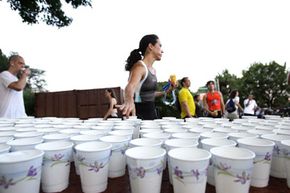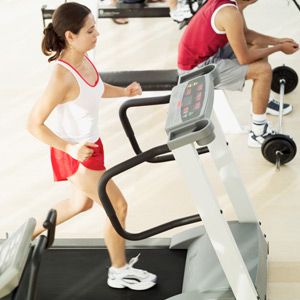You're just coming up on mile 10. You've had an amazing race so far. The weather is cool but not cold; the sun is shining but not so brightly it hurts your eyes. The size of the field is perfect -- large enough to feel competitive but not an overwhelming mass of legs and arms. You swam like a champ and were able to get out of the water and onto your bike in one smooth motion. So far, your running has been strong, and you feel great. As you come up to the water station, all the runners begin to jockey for position -- the closer you can get yourself to the outside of the pack, the faster you'll clear the water station. This is key for two reasons: you'll stay on pace and, perhaps most importantly, you won't slip and fall on one of the hundreds of paper cups that were thrown on the ground by the athletes who've passed.
But those discarded cups are hardly the only waste at many triathlons. The amount of garbage left behind at today's races was unheard of in 1974 when the Mission Bay Triathlon first put the multi-sport event on the public's radar [source: Johnstone]. With a field of just 46 people and a small crowd of spectators, the amount of resources needed to create the race was minimal. Since then, the popularity of triathlons has grown at a quick pace. What started as a small West Coast event has turned into a world-wide sport with hundreds of races each year and thousands of participants [source: USA Triathlon].
Advertisement
The next sections will explore how race organizers are "greening" their triathlons and what you can do to lesson your impact while participating in one of the most exciting tests of endurance and athleticism out there.

